If you want to get better at something, it’s worth learning from the best. As a guy who likes to shoot at small pieces of steel at very long distances, I’m always looking to up my game. The same goes for my shooting partner, Chris Gittings, with whom I’ve shot any number of sniper-style team matches over the years.
Lucky for us, we’re both good friends with Sean Murphy and Greg Hamilton. For a long-range competition shooter that’s like being a basketball player who’s tight with Jordan and Pippen. Except in this case, both these guys are like MJ.
https://www.youtube.com/watch?v=/d7UM1Vwz9Rg
Simply put, Sean and Greg are the most dominant two-man shooting team in the long-range rifle game today, and they’re arguably the best duo in sniper comp history. Every long-range sniper match worth winning, they’ve won. It isn’t an exaggeration to say that when they’re in the lineup, everyone else is basically vying for second place.
Here’s a brief list of their notable first-place finishes:
- Mammoth Sniper Challenge: Three-time winners
- Vortex Tactical Sniper Challenge: Three-time winners
- Competition Dynamics Team Challenge: Three-time winners
- Real World Sniper Challenge: Three-time winners
- Coleman’s Creek Sniper Challenge: Two-time winners
- Sniper’s Unknown Challenge: Two-time winners
- Guardian GTI Team Match: Two-time winners
- Wyoming Tactical Rifle Championship
- 3rd Special Forces Group Sniper Competition
- Bushnell Elite Tactical Sniper Challenge
Their track record of success has been noticed in some very elite circles, including our special operations community who regularly call on Sean and Greg, who go by SG Concepts, LLC, to train them in the finer points of long-range shooting and team marksmanship. (Sean’s and Greg’s day jobs are with Nightforce Optics and Proof Research, respectively.)
They also offer occasional classes to civilian shooters—you can check out their availability at [email protected]—where they teach everything from basic rifle prep and marksmanship, to gear loadouts for endurance shooting competitions, to solving advanced problems that you might encounter in a match under time pressure.
I’ve had a chance to watch them in action up close, and it is something else to see how smoothly they work together, how efficient their communication is, and how quickly they come up with solutions to complex shooting problems and ring steel.
To get a feel for how Sean and Greg work their magic, I arranged to have them train me and Chris over the course of a few days. I wanted to see what they could do to help us get to the next level. While their focus is on team shooting competitions, the skills they teach are equally applicable to shooters who compete on their own and to hunters who like to go afield with a buddy. When you think about what goes into successfully hunting the backcountry with a partner—the gear prep, the communication, the need to stay positive in the face of adversity—it dovetails with the lessons Greg and Sean teach.
Team Shooting Skills
Sean and Greg break their training curriculum into four categories: basic precision rifle skills, basic team skills, advanced shooting skills, and advanced match skills. Over two or three days of training these build on each other and I’ll touch on each.
But I want to cut to the chase and highlight the most critical skill of all for an effective shooting team—communication.
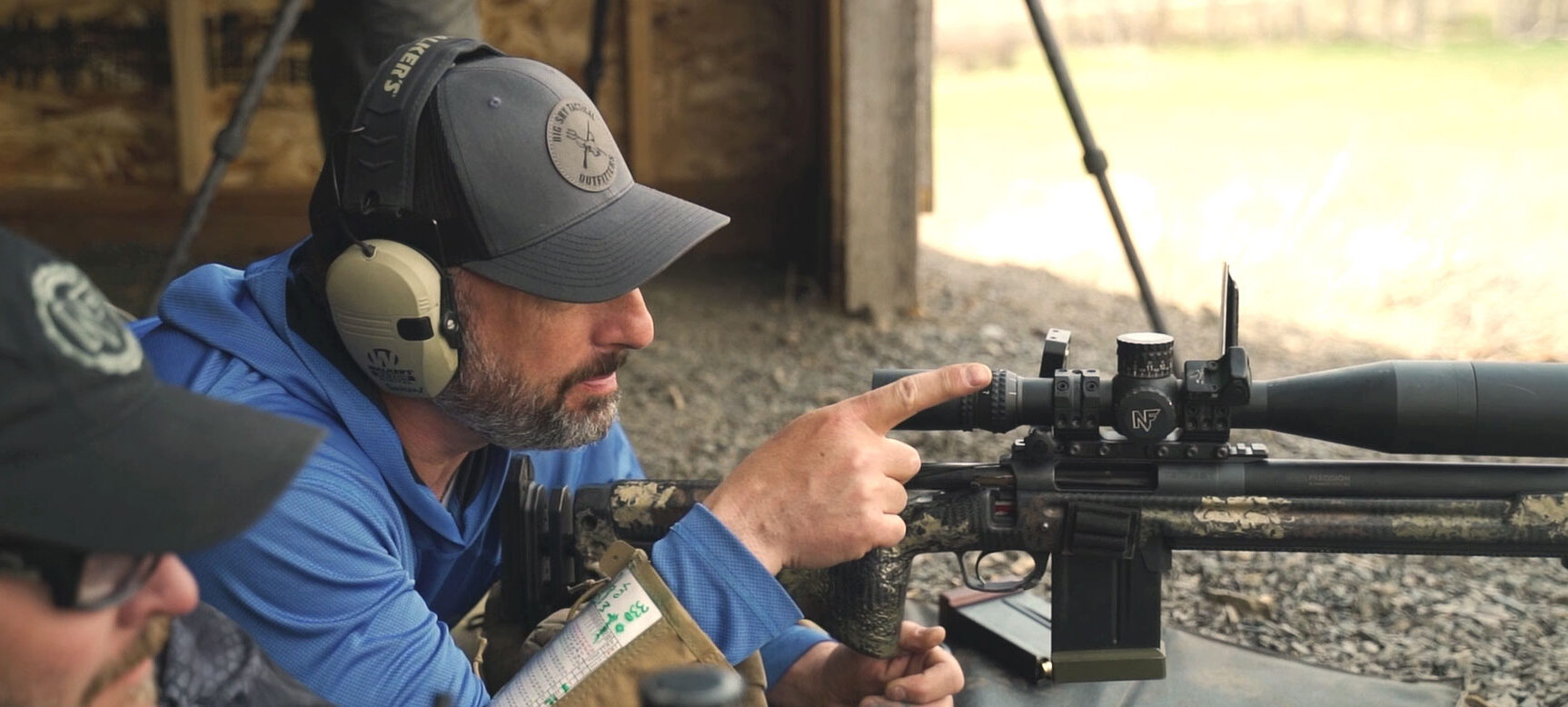
Communication is Key
Having a shooting partner is not unlike having a spouse. You’re going to have good days, bad days, times when you mesh perfectly, and times when you’re out of sync with each other.
The only way to navigate the inevitable hiccups and to overcome obstacles is through solid communication. More than marksmanship skills and more than rolling with the best gear, communication is what makes the difference between success and failure in a team shooting match.
Communication touches every aspect of the process. It influences how well you and your partner prep for the match, it concretizes your strategy for how you approach a stage, it mitigates and prevents mental errors, and it will pull you out of the ditch when your plans go haywire.
This was, by far, the most important takeaway during training with Sean and Greg. While there are some circumstances where less is more, for the most part you won’t go wrong over communicating with your partner.
Here are some specific examples of things to review with your partner. Prior to the match you should have a gear checklist that the two of you share. Who’s bringing the spotter? Does someone have a backup tripod in case one goes down? Is one person in charge of getting snacks and food?
After the stage brief is another opportunity to over communicate. Did you both come away from it with the same understanding of the course of fire? How are you going to approach the stage?
Before you step up to the line make sure you’ve checked each other’s gear to make sure everything is squared away. And so on.
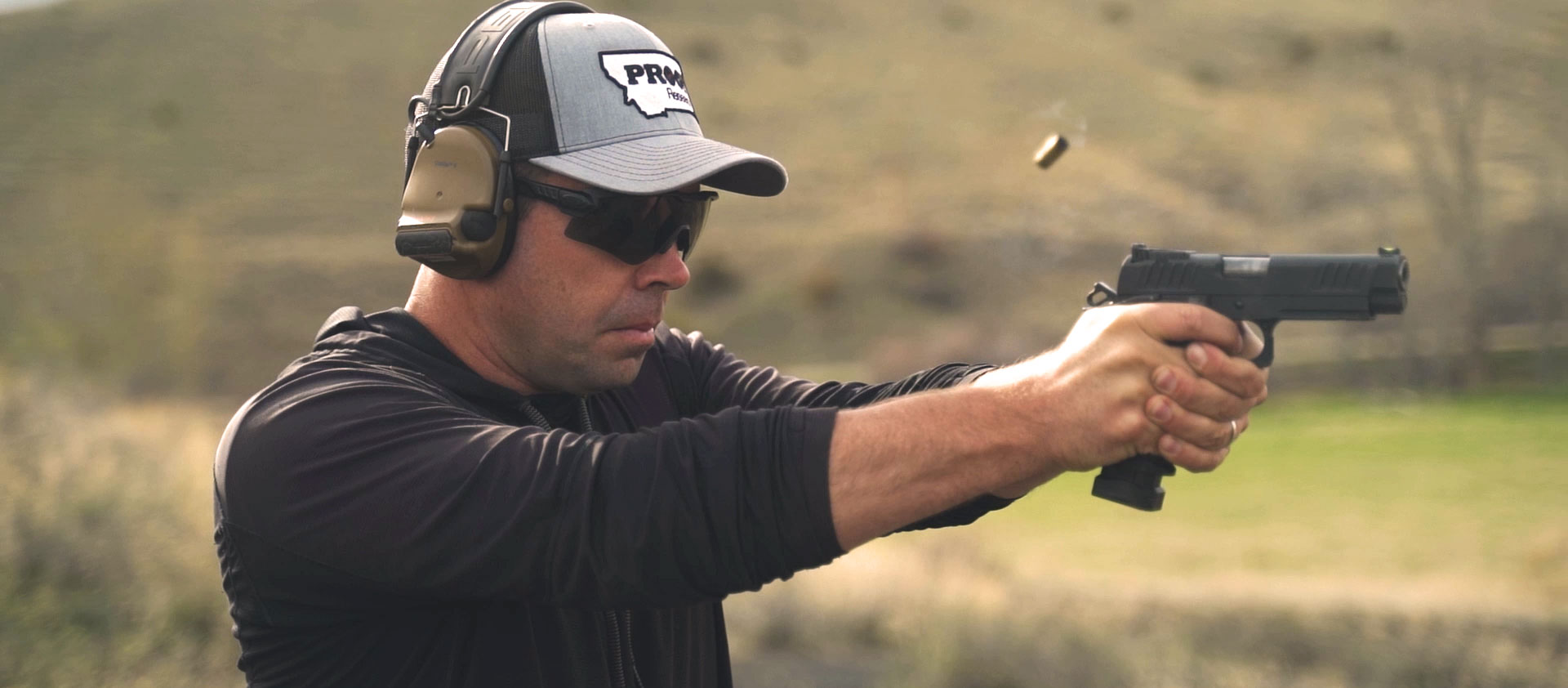
Prepping For a Team Match
Obviously, you need to make sure your kit is ready to go. Ammo loaded. Verified dope entered into your electronics and printed on hardcopies for backup. Fasteners checked on your gun, rings, bases and anything else that needs screws to hold it together.
When it comes to shooting with a partner, however, there’s another layer to this.
Know Your Shooting Partner’s Gear
“You need to know your partner’s gear as well as your own,” Murphy says. “So in the middle of a stage when they forgot their support bag, you can dig it out of their pack and not burn too much time.”
Know Your Partner’s Strengths and Weaknesses
This is a more esoteric, yet still vital, element to succeeding in a team match. Who on the team is better with wind calls? Is shooting from unsupported positions more difficult for one of you? Is your partner particularly skilled at finding targets? All these details will help you shape your strategy and shoot more effectively.
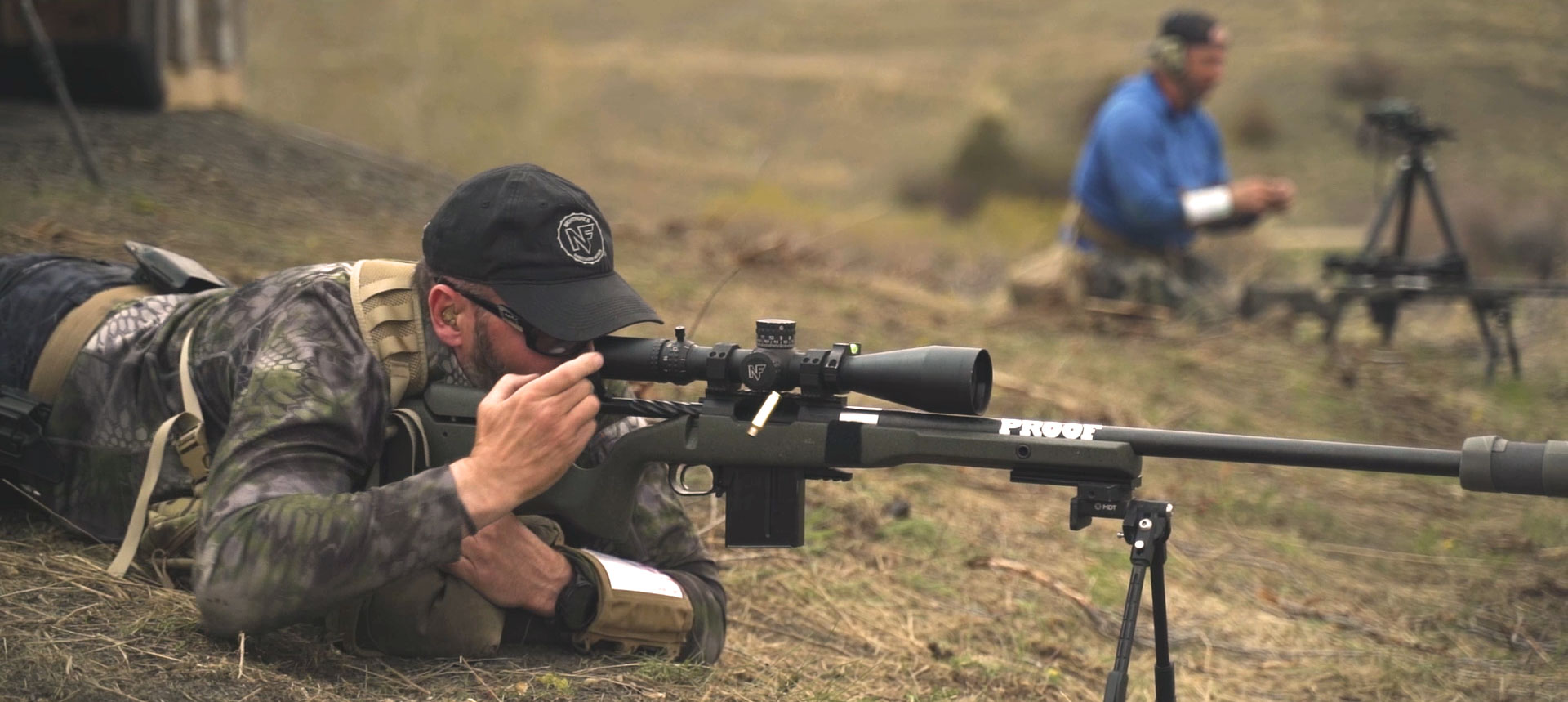
Making a Plan
The stage doesn’t begin when the RO says, “time starts now” and the buzzer goes. It begins with the stage brief, which determines your plan of attack.
“Listen closely during the stage brief,” Murphy says. “Greg and I treat the RO like a third teammate. We ask questions and get as much information as we can. To the degree the match format allows, we’ll use the RO’s knowledge to the fullest.”
Once the brief is complete, you and your partner need to settle on a plan and divide the tasks accordingly. Who’s ranging the targets? Is the first shooter responsible for building their position, or will the other person help them get tripods, bags, and other supports in place?
This is also the time to review all the instructions and make certain you understand exactly what the stage requires and allows. Do you have to shoot the targets near to far? Or can you go left to right? “Gamers” get a bad rap—and some shooters take cutting corners too far—but there is nothing wrong with thinking through the stage and figuring out if there’s a better way to skin that cat. The ability to envision a stage creatively is a skill that separates the top shooters from the middle of the pack.
From Hero to Zero
One example of the need for mental focus was when Sean and Greg ran Chris and I through a relatively complex stage with an involved stage brief. Like most shooters, we were fixated on finding the targets, getting solid behind the rifles, making sure our wind calls were on point, and ringing the steel in the time allotted.
We started with rifles and pistols ready next to a shed and on the command to go, Chris ran ahead to shoot the steel. I had to wait until he was done shooting and crossed back over the starting line before I could take off. We did this with both pistols and long guns.
Chris cleaned the stage no problem, sprinted back, and off I went. I threw my Proof Conviction down, found the targets and hit them all in order—a clean fast stage. Yet after my last shot Sean didn’t stop the timer. I looked up at him and he just smiled. I wracked my brain. Did I engage in the wrong order? Was there another target I didn’t find? Did I not actually hit the last target?
Panic started to set in. Not knowing what else to do I whacked the last target a couple more times, but Sean still didn’t stop the timer.
After we timed out—and scored a zero—Sean reminded us that the stage brief indicated that time stopped when shooter number two ran back across the starting line. In all the excitement I forgot that detail, as did Chris. What should have been a great stage turned into a wreck.
Sean and Greg built up the challenges to create mental stress for me and Chris, and learning to operate under that stress was one of the most valuable facets of their training.
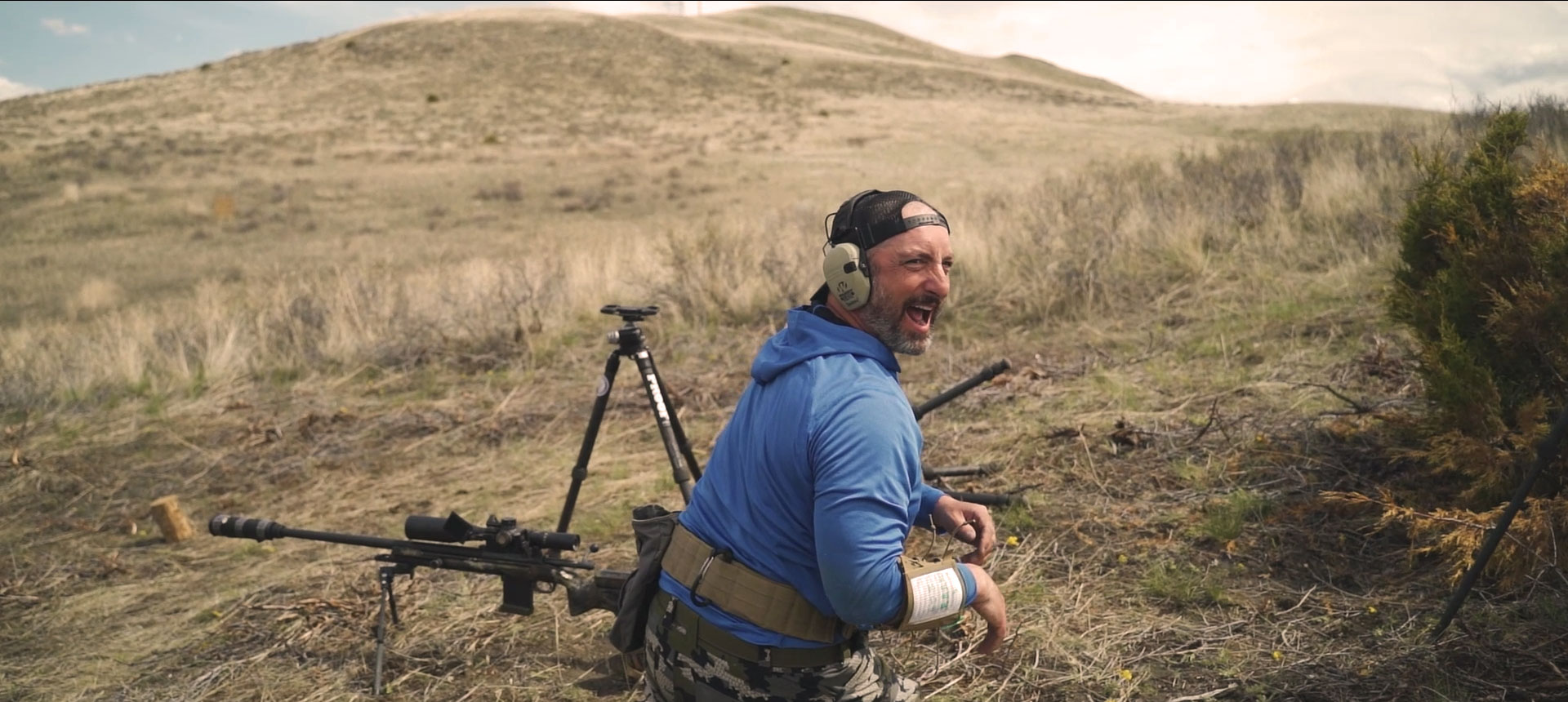
Making the Shot
As important as the whole process is around being an effective shooting team, the most critical element is hitting your targets in the time allotted. Obviously, foundational marksmanship skills are essential. But beyond the basics of establishing natural point of aim, breath control, trigger control, and knowing how to drive the rifle and manage recoil, there’s a lot that goes into getting hits when shooting as a team.
“Do what you have to do to make the shot,” Greg says. And by “you” he means you and your partner.
“The non-shooting partner should always be doing something,” Sean says. “That can be providing a physical support, blocking the sun from the shooter’s eyes, helping spot impacts.”
The point is to figure out what you can do to make your buddy’s time behind the trigger go more smoothly and increase the odds of him or her getting hits.
Up Close and Personal
Sooner or later in a team match you’re going to end up in a cramped position where you and your partner will literally be on top of each other. Even if there’s plenty of room for you to stretch out, you might have a stage designed so that the only line of sight for a shooter and spotter is through a single small window. You’ll be better off draped over each other instead of burning time moving out of each other’s way.
You might get some funny looks at the gun range, but it makes sense to practice these positions so you’re not trying to figure it out on the clock.
Trust Your Buddy
This can be a real sticking point that makes or breaks a shooting team. You’re behind the rifle and just saw a plume of dust kick up next to the steel after your shot. You thought you were a foot to the right, but your partner behind the spotter gives you a different wind call. What do you do?
If your partner was tasked with spotting, then you go with what he or she says and make a correction based on that and send another bullet downrange.
“Don’t second-guess your partner,” Sean says.
Once you and your teammate divide up the tasks on a stage and establish your respective areas of responsibility, ride with it and stick with the plan. There’s no quicker way for a pair of shooters to tank than freelancing on the clock and ignoring each other.
Even if it turns out your partner’s call was wrong, you’ll have time after the stage to review and refine your tactics for the next stage to avoid repeating the error. But the middle of a stage is the worst time to disagree or squabble.
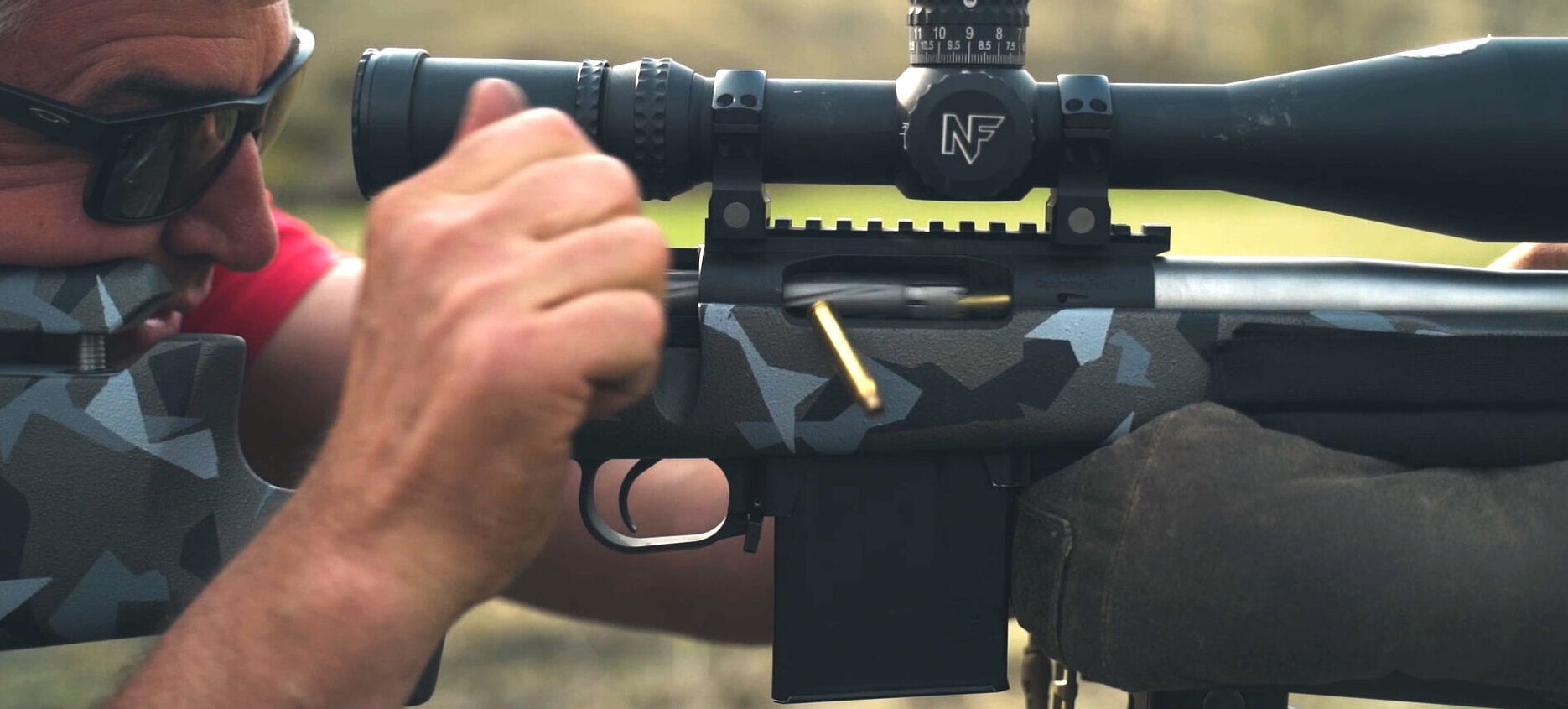
Avoiding Mental Errors
When someone takes up the game of chess, their first goals are to understand the rules, figure out how the pieces move, and learn some basic principles around developing the pieces in the opening. With these in place, there’s only one way to get better—minimizing mental errors.
Blunders are going to happen—they are a fact of life for even highly skilled players—but there’s a direct correlation between winning and avoiding these mental snafus.
The same is true in most forms of competitive shooting and is especially the case in team shooting matches that involve problem solving on the clock.
Gear Check
Prior to every stage at a match, Chris and I do the Macarena. You might be surprised to learn that this dance—arguably the pinnacle of Western culture—isn’t just for Tik Tok and weddings. The hand moves—going from head, to chest, to hips, and down the body—are a useful way to make sure we have ears, eyes, binos, loaded mags, support bags, dope card, and anything else the stage needs on hand before we begin.
When we say “macarena” to each other, not only do we check our person, but we also check our rifles from top to bottom. We make sure the scope is zeroed—or if the distance to the first target is known that it is dialed to the correct value. That the magnification is set to the right amount (usually at 12- to 15-power, though sometimes less if a wider field of view is needed). We check to see if our suppressors are tight. We dial in a parallax setting during this process too.
Making sure you’ve got your poop in a group before the timer starts is one of the easiest errors to avoid.
Keeping Each Other On Task
Unless there’s some reason for you and your partner not to talk during a stage, you should keep up a steady banter to help each other out. One common mistake shooters make—whether when solo or with a buddy—is forgetting to dial the scope between targets. Complex stages, developed by devilish match directors, can trip up even the best of us.
As your partner transitions to a new target, a quick “did you dial?” will keep that from happening. It’s a good habit to develop and will save you points over the course of a match.
Likewise, coaching each other through a stage can be a huge benefit. Reminding your partner to brace their elbows on the rock or barricade or move to a new shooting position as the stage calls for, will help you finish better.
Target identification is another way partners can help each other. Talking each other onto targets and making sure they are engaged in the correct order is an easy way to accumulate points and avoid a costly, and common, mental error.
Meeting the Stage Requirements
Making sure you and your partner complete all the tasks that a given course of fire requires is also key. I fell victim to this, as I mentioned above, when Chris and I were shooting the drill that required us to run back to the starting point. Since I was the second shooter and in the midst of the action, I blame Chris for costing us that stage. Joking aside, making notes on your arm board or dope card delineating the stage requirements is a way to avoid this.
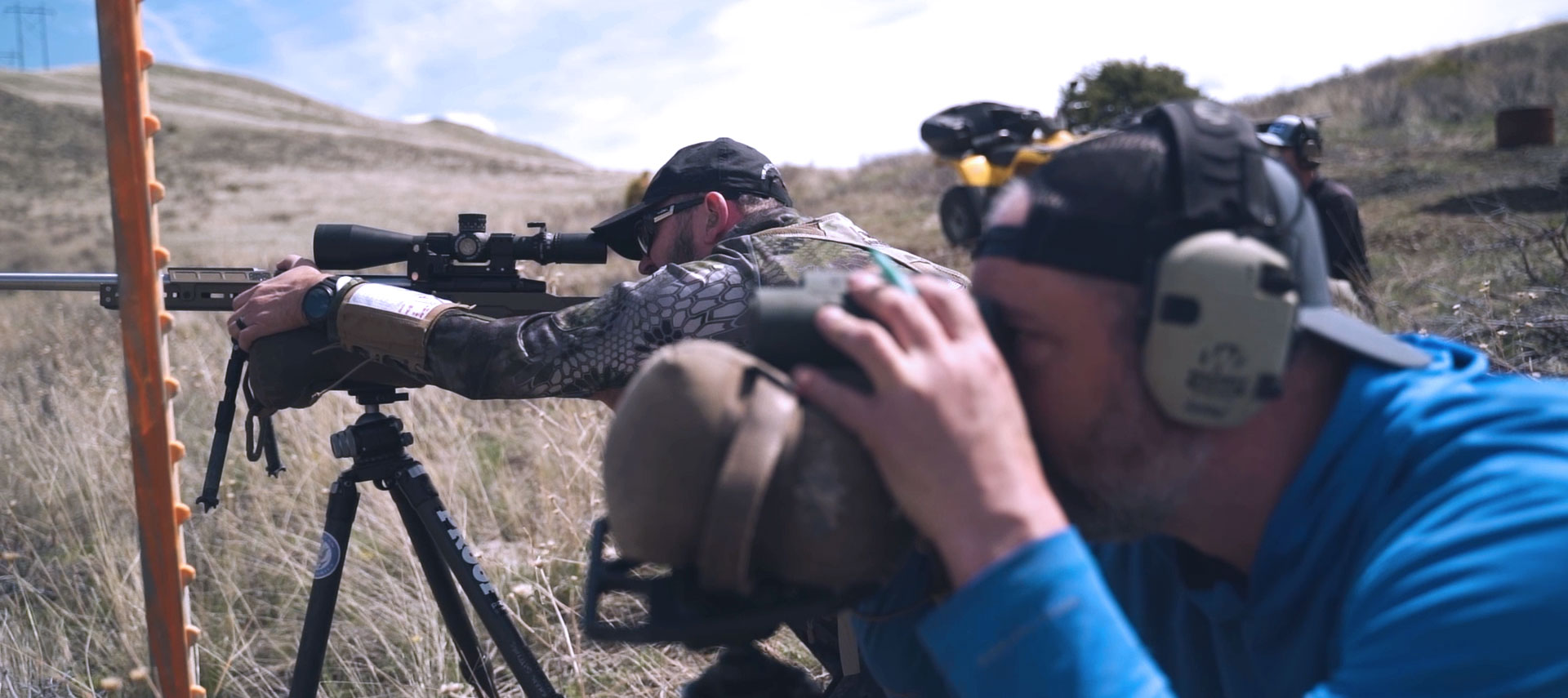
When Things Go To Hell
At some point you’re going to have a terrible stage. Either you or your partner will have a yard sale with your gear, you will have forgotten to load a mag prior to the stage, you’ll run the wrong dope, or your tripod will collapse and send your support bag flying. Like Thanos—it is inevitable.
Should your partner completely mess up, the best thing to do is tell them it is okay, not to worry about it, and give them a cookie. Seriously. Give your partner a snack and make sure they have something to drink as well. As any parent who’s ever dealt with a frustrated toddler knows, a little sustenance can work wonders on a person’s attitude.
There will be plenty of time to review what went wrong later. In the heat of the moment, the best thing to do is to lower the temperature and help your partner get grounded so they can recover and do better on the next stage. Offering criticism, no matter how well phrased or intended, isn’t a smart move.
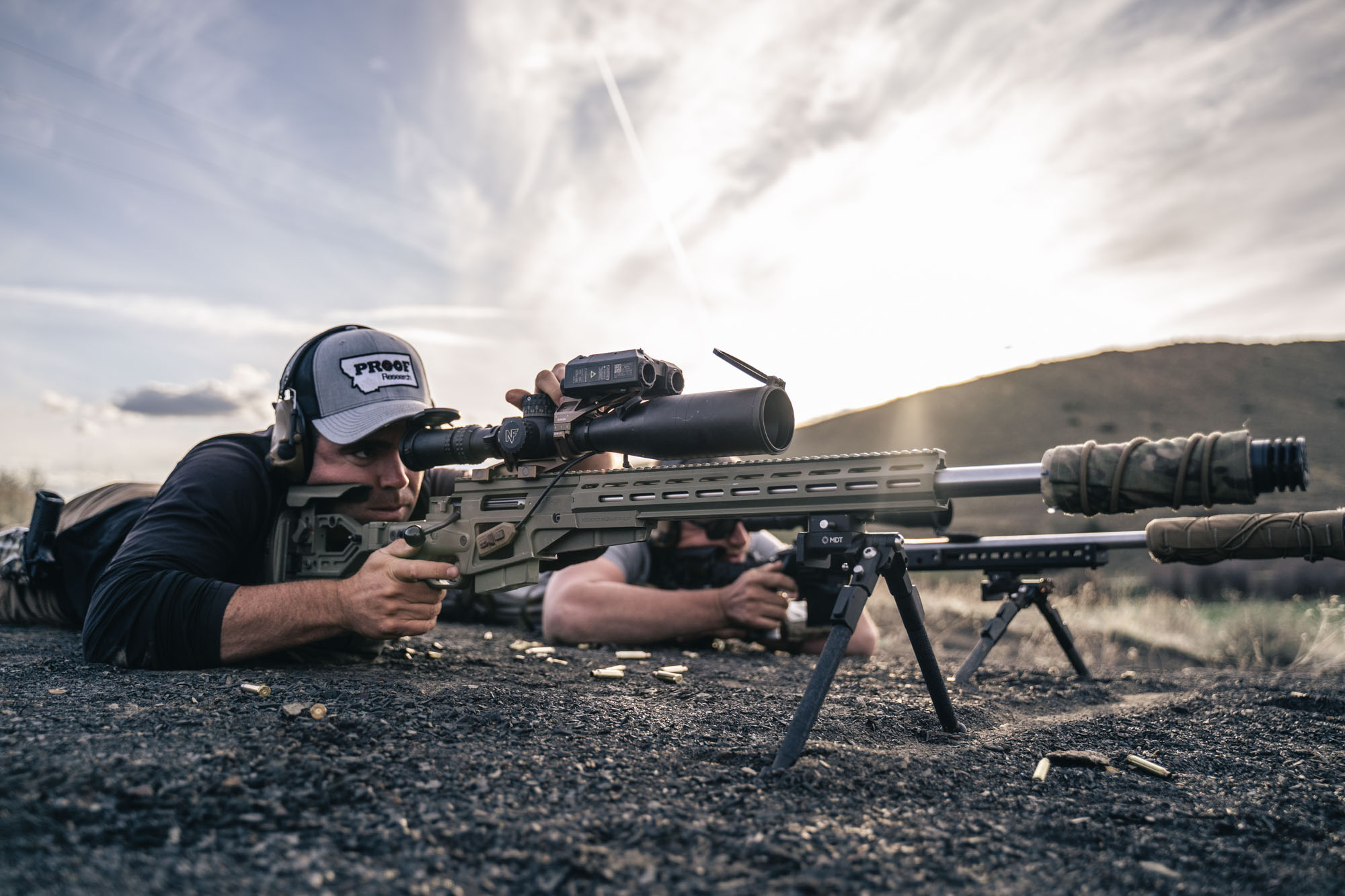
Team Marksmanship Skills
Whether they are called “sniper competitions,” “tactical field matches,” “practical long-range matches,” or some other name, the goal of any stage can be reduced to a simple phrase: Find the targets, hit the targets.
Target Identification
You’ve got two options when it comes to finding targets. Either one person on the team is tasked with that chore, or both shooters can look for the targets. The right approach depends on the specifics of the stage.
If the stage requires deploying a tripod to shoot or establishing a complex shooting position it can be better for one team member to find the targets, then talk the other shooter on to them.
If the stage has a large number of targets, or the match director has made a point of obscuring targets or has scattered them over a large area it can work better to divide the job.
In that case, each shooter should focus on a specific area so that you aren’t finding the same targets. Communication is key to making this an efficient process. Pick an easily identifiable landmark and have one person search to the left of it and the other person look to the right, for instance.
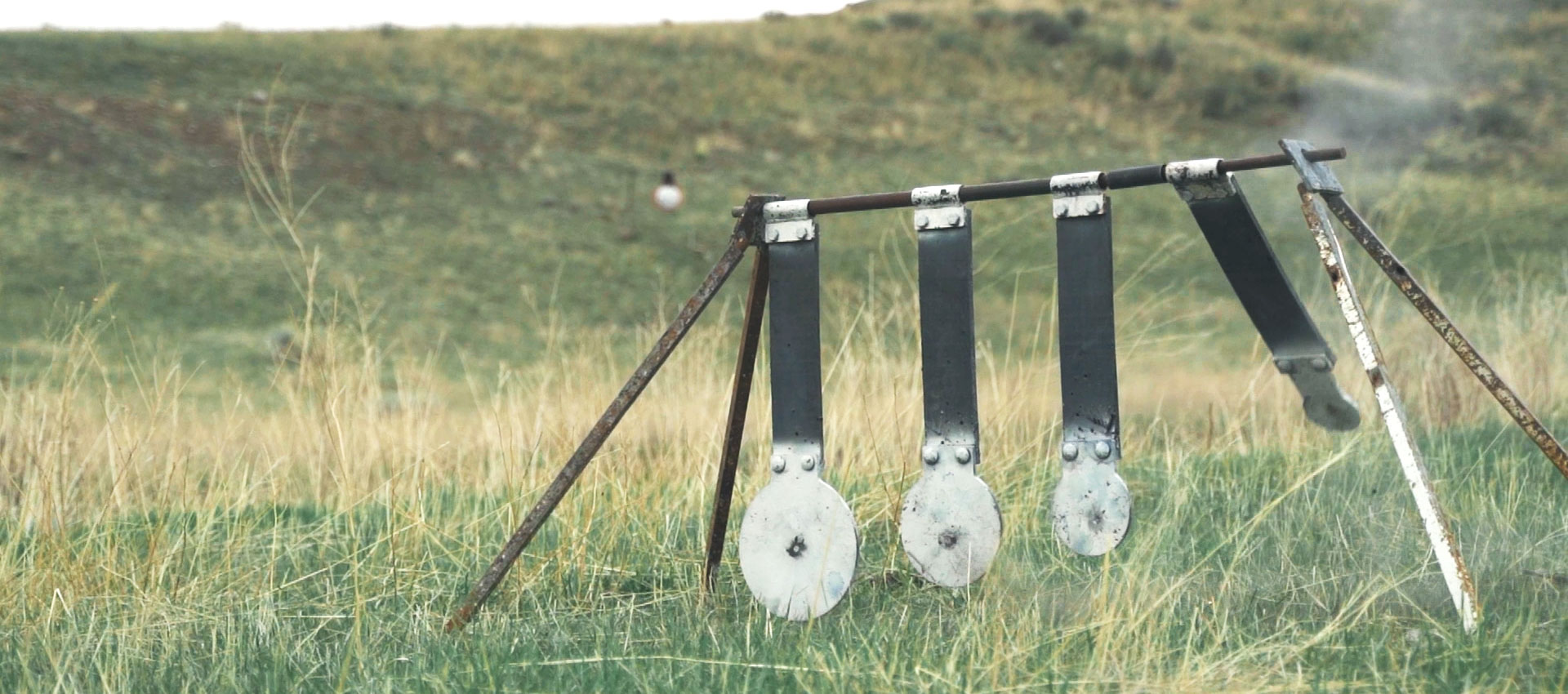
Rangefinding Skills
I love it when I can just point my rangefinder at a target and get a good range. Often, however, that isn’t possible.
Sometimes the target is too small to ping directly. Or the target is positioned so that the range you get isn’t correct. Crafty match directors will place targets down narrow, vegetation-choked shooting lanes or on the backside of a rise in the ground to trigger a false reading.
Often the best thing to do is to range the ground at the base of the target if you can see it. (I shot one match in the rolling plains of Eastern Colorado where I did this and never attempted ranging the actual targets.)
If a target looks like it is tucked between two folds in the ground, range the near and far fold and split the difference. In the case of targets on the backside of hills or down narrow shooting lanes, get the best range you can and then guess as to how much yardage to add.
Sometimes to get a good range you need to ping a terrain feature that’s far to the left or right of the steel but that appears to be the same distance from your shooting position. Be prepared to get creative.
Know Your Rangefinder
It also pays to learn the ins and outs of your specific rangefinder. Take time to figure out where the laser actually hits in relation to the rangefinder’s aiming point. They rarely line up perfectly. (You can ascertain this by lasing on and around the sharp defined edge of an object like a chimney, roofline, target backer, or billboard. By noting when the rangefinder gives readings on whatever is behind the object you can figure out the relationship between the aiming point and the laser.)
Also, using your rangefinder’s scan mode or toggling to best/last target mode can yield better results.
Sniper Talk
You and your partner should develop a common vocabulary for ID-ing targets and practice talking each other onto them. The key is to convey just the right amount of information. Too little communication will leave your partner in the dark, but too much input can muddy the waters and lead to confusion.
Spotting Shots (and When Not to)
One of the biggest benefits to shooting with a partner is having an extra set of eyes on the target to give feedback on hits and misses. This can be critical for fine-tuning wind calls and diagnosing when something’s gone wrong.
That said, sometimes it is better for the non-shooting partner to do something other than spot. If the shooter feels confident about the position and the course of fire, the non-shooting partner can make better use of the time by getting set up for his turn, or by pre-positioning bags and tripods for the shooter in case the stage calls for movement.
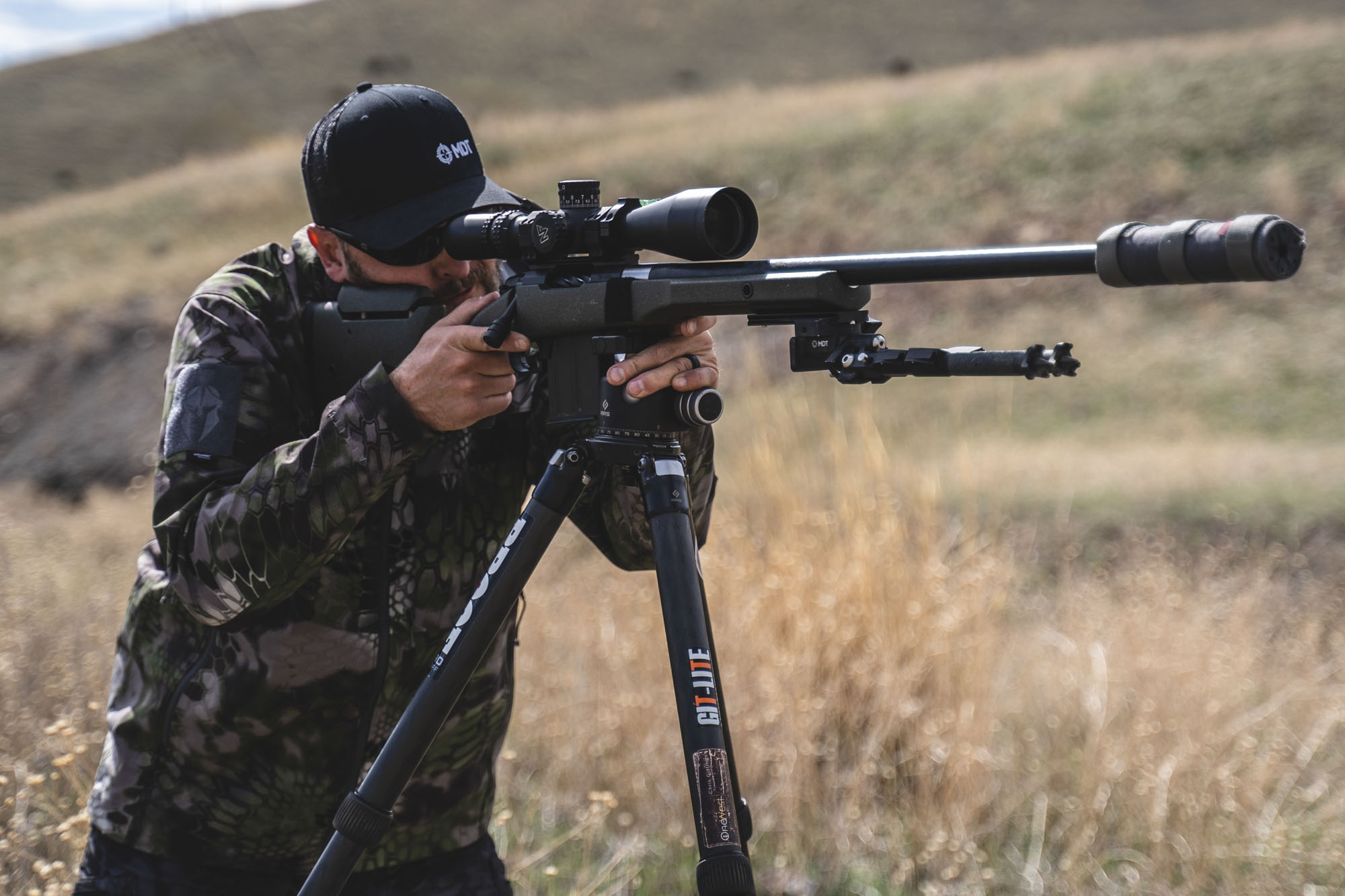
Shooting Supports
I’ve alluded to it elsewhere in the story, but one of the team marksmanship skills that Sean and Greg emphasize is how to use tripods, bags, and even the non-shooting partner’s body to create a stable support.
Run drills where the non-shooting partner is the one placing and moving these supports for the shooter. How you manipulate a bag or tripod for yourself, versus for another shooter, are two different things.
Advanced Team Shooting Skills
When it comes to next-level skills—and this is an area where Greg and Sean excel when they shoot together—there are two categories to think about. One is pure marksmanship skills and the other concerns match strategy.
Spinners and Simultaneous Targets
There’s an almost endless list of targets that can fall under the “advanced” category, but for the sake of simplicity we’ll focus on spinners, which are one of the most common advanced targets encountered in matches.
Sometimes the goal is to just flip the spinner over while taking as little time to do so as possible. But some stages use spinners to reveal other targets placed behind them that must be engaged as well.
It isn’t unusual for a pair of shooters to have the option to take on the spinner at the same time. In this case you want the two initial shots to impact the target simultaneously to get it moving.
The best technique for a team to break their shots at the same time is for one of the shooters to count down from five. But you don’t want to pull the trigger on “one.” Instead, break the shot on the hard “tee” of “two.” That’s a much clearer, cleaner sound for the ear to register than the mushy “wah” in “one.”
Once the spinner starts to move, the trick for the shooters is to time their subsequent shots so that the bullet arrives at the same time the plates on the spinner are perpendicular to the ground.
Mastering this takes practice, but for spinners placed more than 300 yards downrange it can mean breaking the shot when the spinner is 90 degrees or so from being in position.
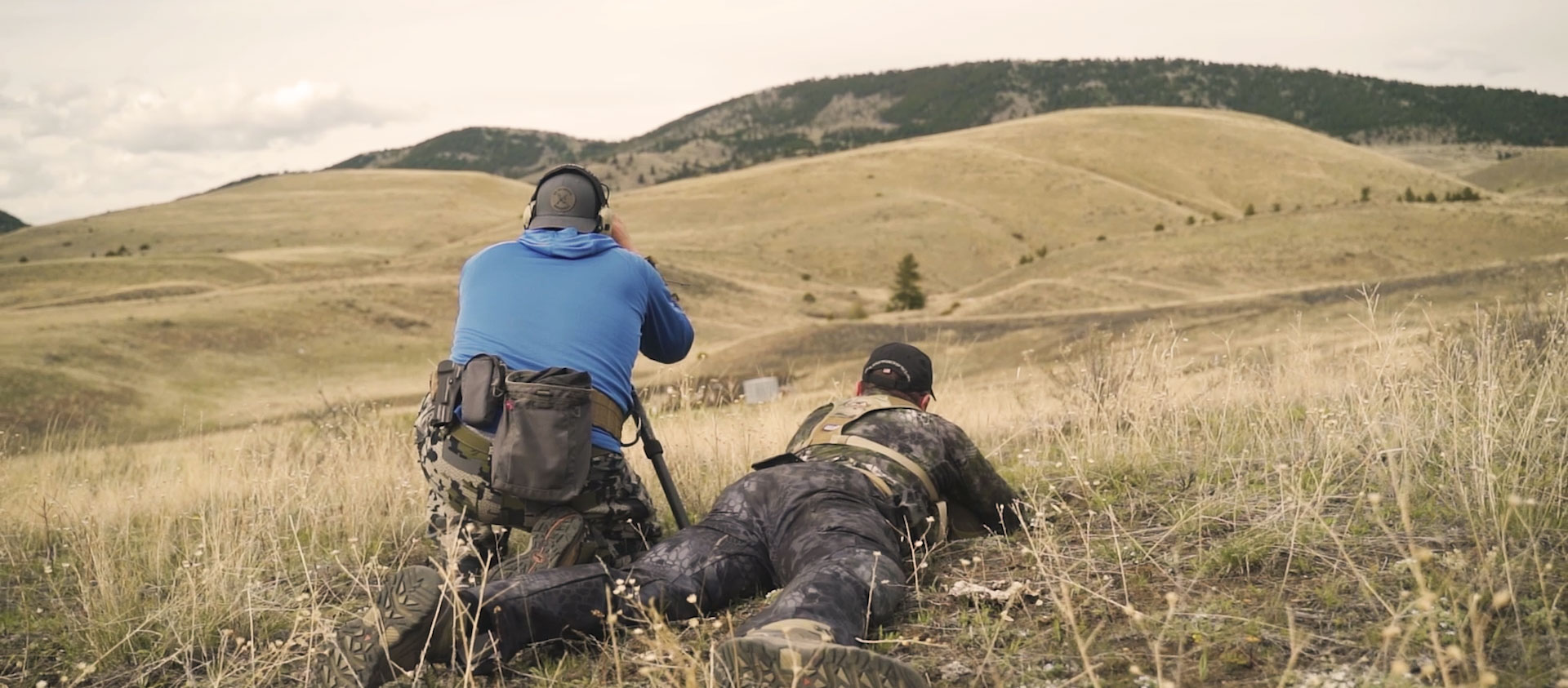
Winning Points
Avoiding mental mistakes and keeping your partner on task is how you avoid losing points in a match. The flip side is to figure out how to win extra points. That’s what separates really good team shooters from the rest of the pack.
There’s no single answer for how to do this, as every match is going to have its own quirks and point-winning opportunities.
Read Next: Best Rifles of 2023
But it hinges some of the most important points that Sean and Greg emphasize. Listen carefully to stage descriptions and the general match rules, processing and analyzing that information, and clearly communicating with your partner to form a plan and look for opportunities to exploit.
To accomplish this, you need to maintain your focus when not shooting. This means giving the RO laser-like focus during the stage brief and gathering data between stages. For example, if you’re able to get to the next stage and watch shooters from the squad in front of you, hustle up there and get on glass instead of hanging back and stuffing mags. This will give you clues as to target locations and wind.
The trick is to make the most efficient use of your time. That’s how you’ll earn extra points—and a higher place in the final rankings.
